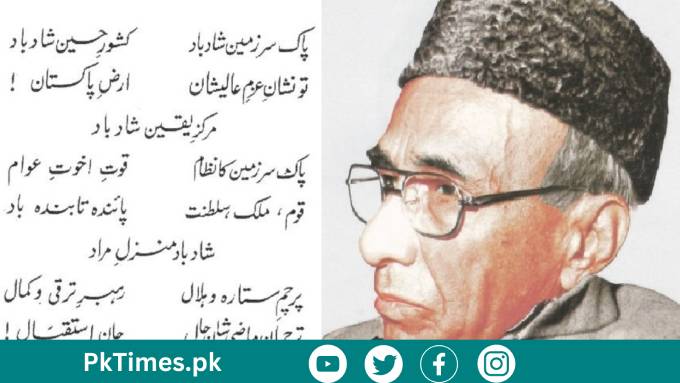Wrote the National Anthem of Pakistan: National anthems are powerful symbols of identity and unity, representing the values, history, and aspirations of a nation. In Pakistan, the national anthem holds a special place in the hearts of its citizens, evoking feelings of pride and patriotism. But have you ever wondered who composed this stirring anthem? In this blog post, we’ll delve into the story behind the creation of Pakistan’s national anthem and explore the life and legacy of its revered composer.
Historical Context of the Pakistani National Anthem
To understand the significance of Pakistan’s national anthem, we must first look at the historical context in which it was written. Pakistan gained independence from British rule on August 14, 1947, following a long and arduous struggle led by prominent leaders such as Muhammad Ali Jinnah. The quest for a national anthem began soon after independence, as the newly formed nation sought to establish its own unique identity.
The Composer: Allama Muhammad Iqbal
The mastermind behind Pakistan’s national anthem is none other than the esteemed poet and philosopher, Allama Muhammad Iqbal. Born in Sialkot, British India (now Pakistan), in 1877, Iqbal is widely regarded as one of the most influential figures in Urdu literature and Islamic philosophy. His poetry inspired the vision of a separate homeland for Muslims in the Indian subcontinent, ultimately leading to the creation of Pakistan.
Composition of the National Anthem
While Allama Iqbal penned the lyrics of the national anthem, the musical composition was entrusted to Ahmed Ghulamali Chagla, a renowned composer and musician. The anthem’s lyrics, written in Persian by Iqbal, reflect themes of unity, faith, and sacrifice, encapsulating the spirit of the Pakistani nation. Chagla’s stirring composition perfectly complements Iqbal’s poetic verses, creating a powerful and evocative anthem that resonates with listeners to this day.
Adoption and Recognition of the National Anthem
Pakistan formally adopted its national anthem, “Qaumi Taranah,” in 1954, following an extensive selection process. Since then, the anthem has become an integral part of national ceremonies, celebrations, and events, serving as a source of inspiration and pride for Pakistanis around the world. Its recognition as a symbol of Pakistan’s cultural and historical heritage has earned it a place of honor in the hearts of generations of Pakistanis.
Legacy and Impact of the National Anthem
The legacy of Pakistan’s national anthem extends far beyond its ceremonial use. It serves as a unifying force that transcends regional, linguistic, and cultural differences, fostering a sense of belonging and solidarity among Pakistanis of diverse backgrounds. The anthem’s stirring melody and poignant lyrics evoke feelings of patriotism and devotion, instilling a deep sense of pride in the nation’s heritage and accomplishments.
Controversies and Criticisms
Like any national symbol, Pakistan’s national anthem has faced its share of controversies and criticisms over the years. Debates have arisen regarding the inclusion of Persian verses in the anthem’s lyrics and the musical composition’s adherence to traditional Pakistani music. However, these controversies have only served to stimulate discussions about the anthem’s meaning and significance, further enriching its cultural and historical context.
Conclusion
In conclusion, the story behind Pakistan’s national anthem is a testament to the power of music and poetry to unite a nation. Through the vision of Allama Muhammad Iqbal and the musical genius of Ahmed Ghulamali Chagla, Pakistan’s national anthem has become a timeless symbol of pride, resilience, and unity. As Pakistan continues to evolve and progress, its national anthem remains a source of inspiration and strength, reminding its people of the values and ideals that bind them together as a nation.
Read more:
FAQ’s
- Why did Allama Muhammad Iqbal choose to write the national anthem in Persian rather than Urdu or another language?
Allama Muhammad Iqbal, a renowned poet and philosopher, chose to write the lyrics of Pakistan’s national anthem in Persian for several reasons. Firstly, Persian was widely regarded as a language of culture, literature, and refinement in the Indian subcontinent, with a rich history and tradition of poetry. By using Persian, Iqbal sought to evoke a sense of cultural heritage and continuity, paying homage to the region’s literary legacy. Additionally, Persian was understood by a significant portion of the population at the time, making it accessible to a broader audience across linguistic and regional divides.
- Was there any controversy surrounding the selection of Ahmed Ghulamali Chagla as the composer of the national anthem?
The selection of Ahmed Ghulamali Chagla as the composer of Pakistan’s national anthem was met with widespread acclaim and approval. Chagla, a highly respected musician and composer, was known for his contributions to Pakistani music and his commitment to preserving and promoting traditional musical forms. His collaboration with Allama Muhammad Iqbal to set the national anthem’s lyrics to music was seen as a natural choice, given his expertise and artistic sensibilities. While there may have been debates or discussions about the musical arrangement of the anthem, Chagla’s selection as the composer was generally well-received by the public and cultural authorities.
- Is the national anthem of Pakistan sung in Persian or Urdu during official ceremonies and events?
The national anthem of Pakistan, known as “Qaumi Taranah,” is sung in its original Persian lyrics during official ceremonies and events. While Urdu is the national language of Pakistan and the primary language of communication in the country, the national anthem retains its original Persian verses as a tribute to the cultural heritage and literary legacy of the region. The anthem’s lyrics are often recited or sung with reverence and pride, symbolizing the unity and resilience of the Pakistani nation.


